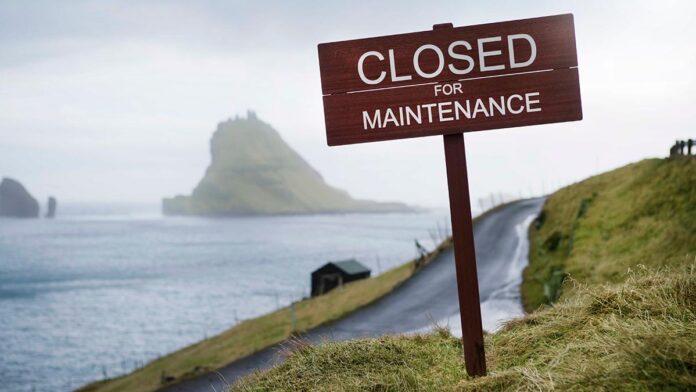Sustainability is taking center stage in location decision-making. Cities, regions – destinations – are coming up with creative and innovative ways to ingrain the message of sustainability and implement sustainable development into their strategy, to boost economic development, location attractiveness and standards of living. But how do they do it?
We asked our panel of place brand specialists which locations globally have made inventive use of place branding for sustainable development.
Key takeaways:
- Costa Rica is perhaps the location best known for integrating its sustainability vision in its country brand strategy.
- The Faroe Islands excel at combining messages of sustainability with witty destination marketing campaigns, “closed for maintenance” probably being the best known.
- The Netherlands and Copenhagen continue to strengthen both their international appeal and reputation through focus on sustainable transport, especially cycling, delivering strong community benefits.
- Community-led events like Caloundra Music Festival on Australia’s Sunshine Coast have set an example for waste management and recycling, at the same time boosting their local identity.
Andrew Hoyne
Until quite recently we’ve been focused very much on the ‘E’ in ESG (environmental, social and governance) issues – on the technical challenges and on linking upgrades to financial returns. Now we need to start thinking about how place branding can raise awareness of the less tangible social impacts of its operations. To do this we need to work closely with local communities, understand who they are, what they need, and what their challenges are if we are to co-create something that’s lasting and meaningful.
Australian property developer and owner Mirvac, do really well talking about how environmental and human benefits go hand in hand. For example, a highly energy-efficient office building is easier to maintain at a comfortable temperature, meaning occupants spend less time taking off and putting on layers of clothing to stay comfortable. These benefits flow through to the company’s bottom lines by improving employee productivity and reducing absenteeism, staff turnover and medical costs. A good place brand will be able to articulate those benefits clearly.
Copenhagen always springs to mind when I think about a city that really walks its talk when it comes to sustainability. They’ve done this by promoting cycling and banning cars from parts of the city centre. Brands need to be about so much more than just ideas, they need to translate into real-life actions which create change. And a strong brand will do that, as Copenhagen demonstrates.
Christopher Hire
The use of multi-modal transport with cycling at some Netherlands train stations has been well-branded by the Dutch Cycling Embassy.
The Dubai Expo had many good ideas implemented during its duration by the UAE organisers. The pavilions at Dubai Expo – shout out to Brazil for example – had many excellent ideas, both of place branding and sustainability.
Often not Western, these were in locations such as the Caucasus and Latin America. Colombia had some interesting ideas at the time I visited (varied each week).
Ed Burghard
Some of the sustainability factors that can influence location brands: Corporate tax structure, community college curriculum, riverside development, acquisition of historic buildings for repurposing rather than destruction.
Günter Soydanbay
The story of Toronto’s Quayside project can be used both as a cautionary tale and a best practice case. Initially, a Google-backed company was to convert industrial land along Toronto‘s waterfront into a hi-tech, futuristic city. Algorithms were supposed to ease congestion and heat roads, timber condos, and office skyscrapers.
The Quayside project became a dazzling place branding story. Supporters promoted Toronto as one of the world’s first “smart” cities. The Canadian prime minister, Justin Trudeau, positioned it as the new vision of the future. The project also meant having thousands of cameras monitoring streets, storefronts, and parks, and harvesting data on the slightest movements. Scary for a lot of people. Torontonians did not want every one of their moves and behaviours monitored. Privacy issues and data breaches became a lightning rod and Google was forced to cancel the utopian project.
The moral of the story is that you cannot impose such big-data-driven projects on societies, even if you have the government’s backing.
That tragedy gave birth to Innovate Cities, a not-for-profit organization that brings together a network of Canadian leaders in developing innovative technologies. A highly collaborative initiative, Innovate Cities brought together the private sector, academia, and all levels of government to create urban environments in a manner that protects data privacy and security.
Meanwhile, the Quayside project was re-visioned to be a dynamic, inclusive and resilient community. There will be more than 800 affordable housing units, a two-acre forested green space, and a significant urban farm atop one of Canada’s largest residential mass timber buildings. In addition, the Quayside will become Canada’s first zero-carbon neighbourhood.
 Robert Govers
Robert Govers
Costa Rica, of course!
 Stuart Speirs
Stuart Speirs
The Caloundra Music Festival on Australia’s Sunshine Coast was started 15 years ago as a not-for-profit family-friendly community event to celebrate the environment, cultural achievements and community of the Caloundra area. Fifteen years on it is one of, if not, the most prominent display of place identity and branding for Caloundra.
Being set up as a not-for-profit has allowed the event to be more innovative and implement game-changing sustainability initiatives ahead of most of its peers. By way of example, in 2014, the event was the first in Australia to ban plastic water bottles. That standard initially set is now the expectation across the country. They have been leaders in waste management, recycling, prioritisation of local vendors, and providing free shuttle services for the community, all along with delivering significant financial returns for community organisations such as the local primary school taking all revenues from festival attendees camping on their grounds.
Its initiation as an event to celebrate local identity meant that profitability was always a secondary concern. As such, this gave the event the flexibility and freedom to carry out initiatives that it otherwise wouldn’t have been able to. This has resulted in the festival becoming well known for its environmentally conscious approach and has in turn added significantly to the region’s credibility as a place where innovation and sustainability are encouraged and celebrated.
Todd Babiak
During COVID, cities rapidly implemented active transportation infrastructure for pedestrians and cyclists.
Tom Buncle
Faroe Islands
Closing the islands down for a weekend, in response to local concerns about ‘overtourism’, and inviting ‘voluntourists’ to come and help build hiking paths and erect signage, was inspiring. It established the reputation of the islands as creative, innovative, caring, and concerned about environmental sustainability. It also reinforced their image as a stunning natural environment. And it got a lot of work done at a minimal cost!
Vancouver Island
The radical refocusing by Tourism Vancouver Island to focus on destination stewardship, as opposed to purely destination promotion, is an example of inspired leadership, which, hopefully, many destinations around the world will follow.
Changing the business model to a non-profit social enterprise underlines the focus on the purpose of tourism: to improve the quality of life of local communities through tourism, rather than to develop tourism without regard to local community concerns.
Now known as “4VI” to reflect its four key pillars – community, business, culture, and the environment – the former Tourism Vancouver Island really gets it. Watch this space!
Jaume Marín
In my opinion, some of the best examples are:
- Palau Pledge
- CopenHill
- Tij Observatory in Holland
Malcolm Allan
In my opinion, the most comprehensive example of an inventive place brand strategy for sustainable economic development is the national brand strategy of Costa Rica which has placed sustainable development, powered by green energy sources and its commitment to sustainable development practices, at the heart of the country’s economic development.
Here I must declare an interest in the country that hired Bloom Consulting to help support the development of its strategy.
This “holistic” approach to nation and country development is a rare example of a country truly recognising the potential “power” of place branding as a core framework for planning its development, not just promoting it.
In doing so it positively improves perceptions of the country, highlights its green credentials, promotes examples of innovation across many sectors (not just tourism) and strengthens the country’s ability to attract “clean” investment, and “ generates” an increased sense of national identity.
To do so a national brand team was created with a multi-year strategy and plans for core central government departments to contribute and coordinate their actions and investments and incentives for the private sector and support for community ventures. Here place branding was not just icing on the cake; it was finding and mixing the ingredients.
Examples of the initiatives and projects included in the core sectors of tourism, inward investment attraction and product development for export include identification and promotions of the skills of its workforce and businesses (including their expertise in green technologies, targeted investment in green energy sources, investment in “green skills” of the works force involved in agriculture, nature conservancy and protection of flora and fauna.
In other words, active investment in the development of its economic and human assets for the benefit of the country and its people, providing the basis for a new story about the country and changed perceptions of its offer and experiences, as a place to live and work as well as a place to visit.
Sonya Hanna
Sustainability is based on three pillars: environmental, social, and economic.
Community (in its broadest sense) facilitated participation is an underpinning driver of these pillars. Sustainability leadership should make it easy and as inviting as possible for communities, consumers, and businesses to participate.
For example, in relation to economic development, the Experience Kent programme helps to develop an experiential off-season tourist economy engaging local businesses to create innovative, commercially viable products and services that are environmentally friendly, such as cultural tours, foraging and cookery staycations and woodland glamping.
In relation to the social and environmental aspects, respectively, Costa Rica has become an ecotourism hub through ecosystem preservation.
‘Preservolution’ describes Visit Faroe Islands’ perspective on tourism and their sustainable tourism strategy. At the core of their strategy are the islanders’ needs, desires and lifestyles.
Whether a place pursues a single, mixture or all three pillars, once these pillars become part of a place’s brand positioning, place branding then becomes a prevailing tool for the development of cohesion.
Find all panel insights here.
Enjoyed this snapshot of expert views on how innovative place branding initiatives can boost the sustainable development of countries, cities, destinations? Thanks for sharing!







